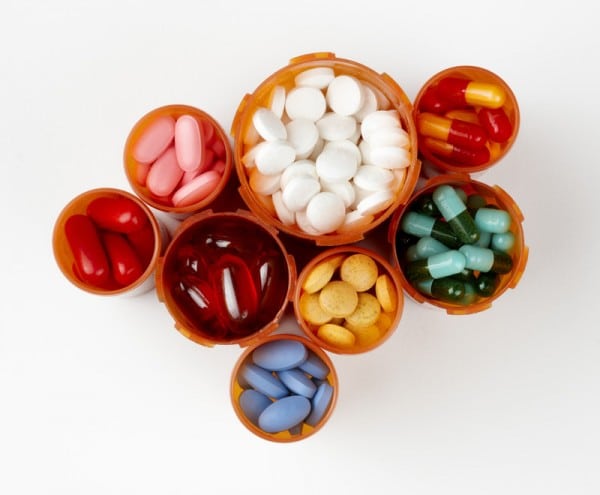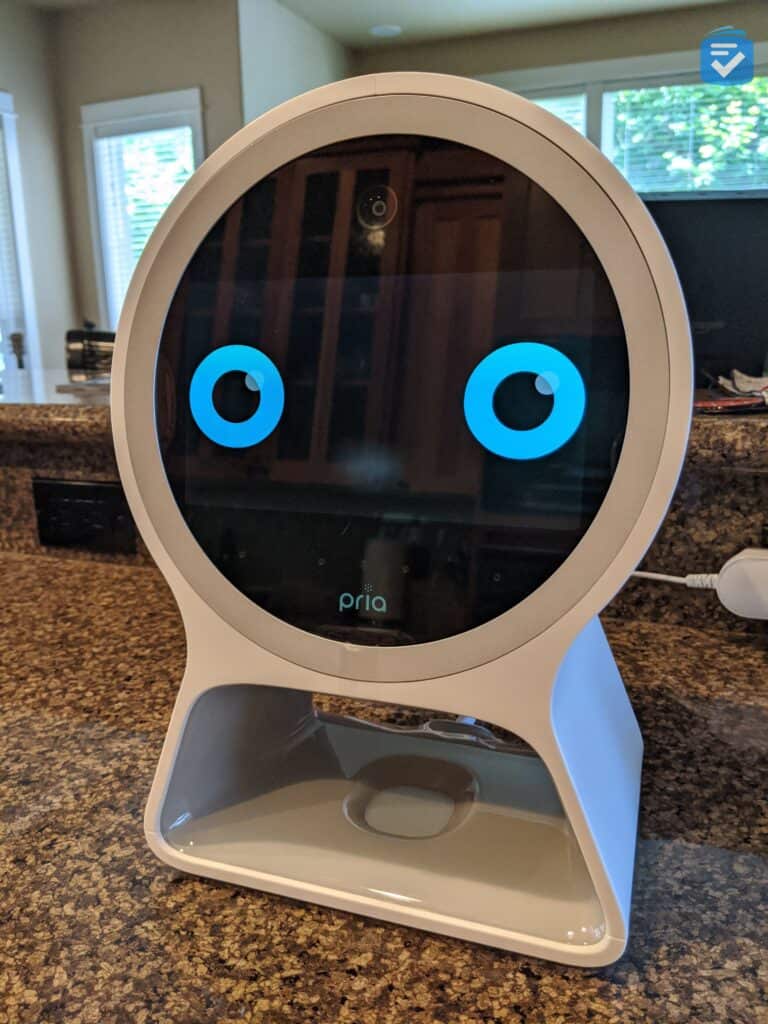Medication Disposal for Seniors

How many bottles of unused medication are sitting in drawers and cabinets around your home? Indeed we all have at least a couple; however, few of us know the dangers of keeping them around, not to mention the negative impact of improper disposal.
But what exactly does it mean to dispose of medications improperly, and how can one go about removing these meds in a way that is both safe and environmentally conscious? In this article, I’ll take an in-depth look at the dangers of keeping unused medication hanging around, in addition to examining the severe consequences of improper disposal, and, most importantly, providing ways in which to dispose of medication properly.
Bilingual Guidance: Prefer reading in Spanish or know someone who does? This pamphlet by the FDA comes in both English and Spanish!
Dangers of Non-Disposal
It’s easy to forget about old medication, especially if you no longer use them; however, there are many dangers to doing so, not only to you but also to those who enter your home. Here are some potential consequences of improper medication disposal.
Chemical Composition
The chemical composition of expired prescription medication changes over time, sometimes leading to weaker effects or no effect at all. Some expired medications may experience bacterial growth and can become harmful, even poisonous, to anyone who consumes them. Others, if taken after expiration, can lead to antibiotic resistance, which makes it harder for you to get better if you need that drug later on. You should always adhere to the expiration dates on your bottles of medication. In the event that this information has worn off the bottle over time, you can always call up your pharmacist, who will have a digital record of your drug information.
Gateway to Addiction
Sadly, opioid misuse has become far too commonplace, and this is among more than just young adults. In fact, older adults are among the most at-risk populations for opioid use disorder, due to their increased medication sensitivity and slower metabolisms. Older adults are also more frequently prescribed highly addictive opioid-based medication. When used as directed, these drugs pose little danger; however, it becomes risky when we keep the medication around after it’s served its original purpose.
Although storing extra pills from your spouse’s surgery in that catch-all kitchen drawer may seem harmless, it provides easy access for you and the people you care about to make mistakes.
It might start with you or your partner using the pills to help with poor sleep. Alternatively, it might affect your teenage grandson when he comes to visit and decides to experiment with the pills. Either way, the risks when administering prescription medications, especially narcotics, without a doctor’s direction, are high. If you’re lucky enough to have no medical complications, initially, it doesn’t end there. The possible impact of addiction can be life-threatening.
Accidental Overdose
Roughly 50,000 children under the age of five are taken to the emergency rooms each year for possible poisoning because they unintentionally took someone else’s medication. Young children are curious, and it never fails to surprise me how they get into everything. If they’re roaming your house and find a food or candy-like substance, chances are, they’ll try putting it in their mouths.
FYI: If you’re using the garbage to get rid of your unused or expired medication, specifically narcotics or amphetamines, you could be fueling an addict’s problem without even knowing it, as those struggling with addiction have been known to rummage through trash for pills.
Medication Disposal and the Environment
Improper disposal of medication not only can harm the people around you, but it can also pollute the environment. Here are some reasons you should think twice before flushing expired pills down the toilet.
Toilet and Streams
Research by the University of Illinois has traced prescription medications to waterways across the United States, partly due to residents flushing unused medication down the toilet. Even worse, since our treatment facilities aren’t equipped to remove these drugs, an Associated Press investigation determined that a vast cocktail of medications, from anticonvulsants and mood stabilizers to sex hormones and antibiotics, has made its way into the drinking water supply of at least 41 million Americans. Consumers disposing of these substances down the drain are responsible for part of this contamination.
In 2014, the USGS and Environmental Protection Agency discovered over 400 human source contaminants in samples from 38 streams across the country. Of those 400, there were approximately 230 active drugs and poisons. Experts found antidepressants in the brain tissue of white sucker fish up to five miles from a wastewater treatment facility.
While flushing medications might seem like a foolproof method of disposal, it really just pushes the problem into our water supplies, potentially harming wildlife and other people in the process.
Liquid Landfills and Garbage Juice
Rather than flushing unused meds down the toilet, many people throw them in the trash. It seemed logical to me at first. After all, it’s going to a landfill, so it can’t hurt anything, right? Unfortunately, this is not the case. Because unused and expired drugs are still chemically active, even those disposed of in the recommended way, they still end up in the environment via garbage juice, a landfill liquid that’s collected and sent to wastewater treatment plants.
Drugs and Garbage: For certain medications, it is safe to dispose of them via traditional garbage; however, you should always look up information pertinent to said drugs to make sure this is a safe option.
Proper Disposal Options
The safest and most responsible means for the disposal of unused medication is to bring them to a national or state-sponsored Take-Back initiative.
Take-Back Events
For the last decade, the Drug Enforcement Administration (DEA) has hosted a National Prescription Drug Take-Back Day several times each year. These events provide a safe way to get rid of your unused medications while minimizing the environmental impact. Thus far, the 17 successful national events have safely collected over 15.2 million pounds of unused or expired medication. Many states have followed suit, holding additional take-back days throughout the year. If you aren’t sure whether your state or local area takes part, check with a pharmacist or local law enforcement.
Permanently Registered Take-Back Sites
The DEA also partners with certain local businesses, hospitals, pharmacies, or law enforcement agencies to maintain permanent take-back sites. These sites serve the same purpose as the national events but are available to you whenever the registered take-back location is open, rather than only a few days of the year. Each site’s collection system may vary: they may use drop boxes, mail-back programs, or aid in other home disposal methods. If you’re like me and plan on using a drop-off kiosk like those at CVS and Walgreens, keep in mind that while these collection locations do take items like patches and inhalers, they do not accept needles or illegal drugs.
Household Disposal (Which Medicines Can Be Discarded)
To Flush or Not To Flush
Although flushing medication poses certain risks, there are a few drugs that the FDA emphasizes users should flush after use or when they expire for the safety of everyone in the home. These are typically drugs that may be especially harmful and, in some cases, fatal with just one dose if they are used by someone other than the person for whom the medicine was prescribed. You can find the flush list on the FDA website.
>> Related Reading: Anticholinergic Drugs and Why Some of Them are Dangerous for Seniors
Garbage Guidelines
The FDA only recommends using garbage as a medication disposal method if there are no nearby take-back facilities or upcoming events. If trash is all you have available, experts ask that you follow these strict guidelines to minimize your environmental impact.
Managing Medications Safely
If you’re looking for more ways to manage your medications safely, then I’d recommend taking a look at an automated medication dispenser. These devices store and track the medication use for either you or a loved one. They’ll even provide you with notifications in the event of missed or late doses.

For more on automatic medication dispensers, check out our list of the best automatic medication dispensers of 2025.
Bottom Line
I’m looking forward to dropping off bottles of unused medication through a take-back initiative near me. I’d never want to risk my family’s safety, but I don’t want to damage the environment or local water supply by sending unused medications down the drain or to a landfill. Let’s all try to do our part in keeping our households, communities, and the environment safe by responsibly disposing of our unused or expired medications through national or state-run take-back programs.
Frequently Asked Questions
-
Can unused medication be donated?
Some states allow unused medications to be donated. However, the FDA has expressed its concern about this practice and does not endorse these programs.
-
How do I dispose of Fentanyl Patches?
Used or unused, fentanyl patches are one of those products the FDA recommends flushing. Since fentanyl patches contain opioids, they can be extremely dangerous for anyone without a prescription.
-
What does the government do with the drugs I bring to take-back events?
The drugs aren’t resold, repackaged, donated, or otherwise released back into circulation; rather, they’re rendered what the DEA calls non-retrievable. Using enclosed facilities, government contractors apply heat and their own unique progress to reduce these medications to ash and subsequently dispose of them. None of your drugs are resold or released back into circulation.
-
Why is crushing pills to destroy them considered dangerous?
Pills are designed to release in your body over a period of time. When you crush them, your body gets it all at once. You also chance damaging inhalation and skin contact.
-
Do many older adults struggle with prescription abuse?
Compared to younger demographics, older adults do display higher rates of prescription abuse. Because we tend to have more health issues as we age, we also receive more medications, many of which, if we aren’t careful, can be addictive.
